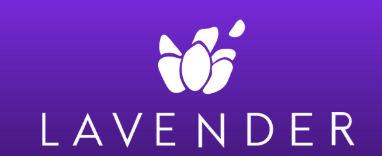Academic research papers contain dense information across dozens of pages. You struggle to extract key findings quickly, spend hours reading methodology sections, and miss important insights buried in complex discussions. Literature reviews become overwhelming when facing hundreds of papers requiring analysis.

Intelligent ai tools revolutionize how researchers process academic content. These sophisticated platforms identify crucial information, extract main arguments, and generate concise summaries within minutes. Explore five powerful solutions that will accelerate your research workflow and improve comprehension efficiency.
Why Researchers Need AI Tools for Paper Summarization
Traditional paper reading requires substantial time investment. A single research paper demands 2-4 hours for thorough analysis, including methodology review, results interpretation, and conclusion synthesis. Graduate students and professionals often handle 20-50 papers weekly.
Modern ai tools understand academic writing patterns, recognize research structures, and identify significant findings automatically. They distinguish between background information, methodology details, and novel contributions. These platforms enable researchers to process literature more efficiently while maintaining comprehension quality.
Top 5 AI Tools for Research Paper Analysis
1. Semantic Scholar AI-Powered Summaries
Semantic Scholar integrates artificial intelligence directly into academic search functionality. This comprehensive ai tool provides automated summaries alongside traditional search results, streamlining literature discovery and analysis.
Academic Features:
Automated abstract enhancement
Key finding extraction algorithms
Citation context analysis
Related work identification
Impact metric integration
The platform analyzes millions of research papers across multiple disciplines. Its AI system identifies breakthrough findings, tracks research trends, and highlights influential studies. Researchers receive structured summaries emphasizing methodology, results, and implications.
Pricing: Free access with premium institutional subscriptions available
2. Scholarcy Research Summarizer
Scholarcy specializes exclusively in academic paper summarization. This dedicated ai tool processes PDFs and generates structured summaries following academic conventions and research standards.
Specialized Capabilities:
Multi-section summary generation
Reference extraction and linking
Figure and table analysis
Methodology breakdown creation
Key term identification
Scholarcy understands academic paper structure intimately. It separates introduction context from novel contributions, summarizes methodology without excessive detail, and highlights statistical significance. The tool maintains academic terminology while improving readability.
Pricing: Free tier with 3 summaries monthly; Pro version at $9.99/month
3. Elicit Research Assistant
Elicit combines literature search with intelligent summarization capabilities. This innovative ai tool answers research questions by analyzing relevant papers and synthesizing findings across multiple sources.
Research Integration:
Question-driven paper analysis
Cross-study comparison features
Evidence synthesis automation
Methodology comparison tools
Gap identification assistance
Users input specific research questions, and Elicit identifies relevant papers automatically. The platform extracts pertinent information, compares methodologies across studies, and identifies consensus or contradictions in findings.
Pricing: Basic plan free; Plus subscription at $10/month; Pro at $42/month
4. SciSpace Literature Review Tool
SciSpace focuses on collaborative research and paper comprehension. This versatile ai tool provides summarization alongside annotation features, enabling team-based literature analysis.
Collaborative Features:
Real-time paper annotation
Team summary sharing
Citation management integration
Discussion thread creation
Progress tracking dashboards
The platform excels in group research environments. Multiple researchers can analyze papers simultaneously, share insights, and build comprehensive literature reviews collaboratively. AI summaries serve as starting points for deeper discussion.
Pricing: Individual plan at $12/month; Team plans start at $20/month per user
5. Research Rabbit Discovery Platform
Research Rabbit approaches paper summarization through visual relationship mapping. This unique ai tool creates interactive networks showing connections between papers while providing concise summaries.
Visual Intelligence:
Paper relationship visualization
Timeline-based discovery
Author collaboration mapping
Citation network analysis
Trend identification graphics
The platform generates summaries within broader research context. Users understand how individual papers contribute to field development, identify influential authors, and discover emerging research directions through visual exploration.
Pricing: Free for individual researchers; institutional pricing available
Feature Comparison: AI Tools Performance Matrix
| Tool | Summary Quality | Processing Speed | Academic Focus | Collaboration |
|---|---|---|---|---|
| Semantic Scholar | High | Very Fast | Excellent | Limited |
| Scholarcy | Excellent | Fast | Outstanding | Basic |
| Elicit | Very High | Medium | Excellent | Medium |
| SciSpace | High | Fast | Very Good | Excellent |
| Research Rabbit | Good | Fast | Good | High |
Optimizing AI Tools for Research Efficiency
Upload high-quality PDF files for best summarization results. AI tools perform better with properly formatted academic papers containing clear section headers and readable text. Scanned documents may require OCR processing before analysis.
Customize summary length based on your research needs. Comprehensive literature reviews benefit from detailed summaries, while quick screening requires brief overviews. Most ai tools offer adjustable summary depth settings.
Combine multiple tools for comprehensive analysis. Different platforms excel in various aspects of summarization. Use Scholarcy for detailed academic summaries, then verify findings with Semantic Scholar's broader database analysis.
Integration Strategies for Academic Workflows
Incorporate ai tools into existing research management systems. Many platforms integrate with reference managers like Zotero, Mendeley, and EndNote. This connectivity streamlines citation management and summary organization.
Establish quality control procedures when using AI-generated summaries. While these ai tools provide excellent starting points, human verification ensures accuracy and completeness. Cross-reference key findings with original papers before citing.
Train research teams on effective tool utilization. Different ai tools require specific approaches for optimal results. Standardize summarization workflows to maintain consistency across team members and research projects.
Frequently Asked Questions
Q: How accurate are AI-generated research paper summaries?A: Professional ai tools achieve 85-92% accuracy for factual content extraction. However, nuanced interpretations and novel insights may require human verification before use in academic work.
Q: Can these AI tools handle papers from all academic disciplines?A: Most ai tools work across disciplines, though performance varies. STEM papers with standardized structures typically receive better summarization than humanities papers with complex arguments.
Q: Do AI tools respect copyright when processing research papers?A: Reputable ai tools operate within fair use guidelines for academic research. However, verify institutional policies regarding AI tool usage for copyrighted material analysis.
Q: Can AI summaries replace reading original research papers?A: AI tools provide excellent overviews but cannot replace thorough paper reading for critical analysis. Use summaries for initial screening and prioritization rather than complete substitution.
Q: How do I ensure AI-generated summaries maintain academic integrity?A: Always cite original sources rather than AI summaries. Use ai tools for comprehension assistance while maintaining proper attribution to original authors and research.








